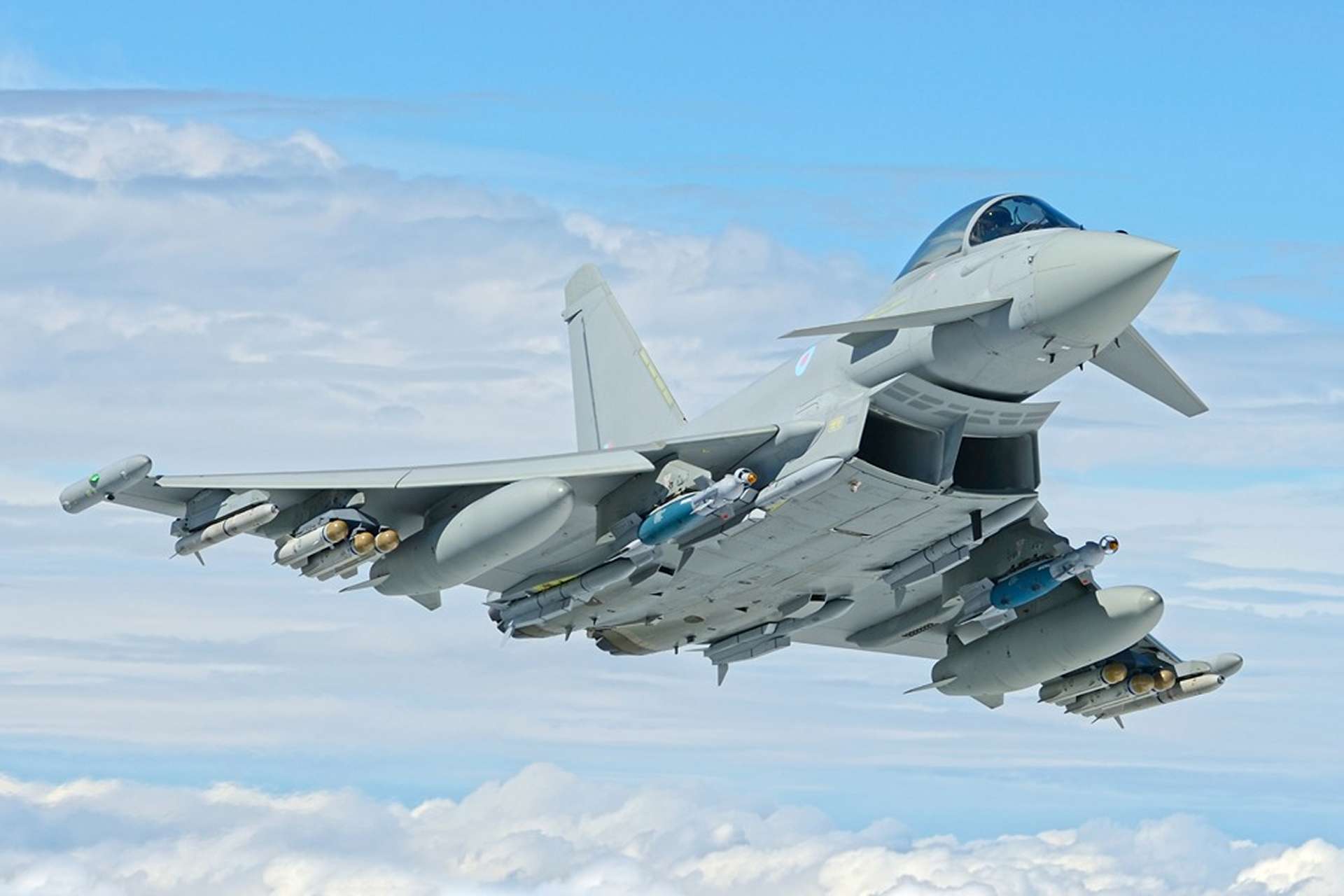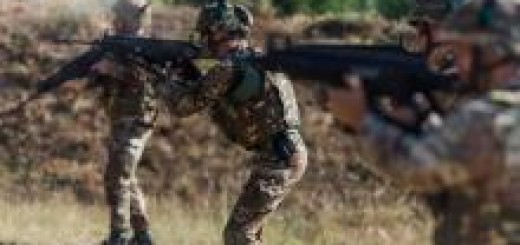Chancellor Scholz Announces Purchase of 20 Eurofighter Jets at ILA Berlin 2024

{loadposition bannertop}
Breaking news
{loadposition sidebarpub}
Germany has announced the purchase of an additional 20 Eurofighter jets from Airbus. Chancellor Olaf Scholz revealed this plan during his speech at the International Air Show in Berlin on June 5, 2024. This recent acquisition is part of a broader initiative to modernize and expand Germany’s military assets in response to the increasing geopolitical tensions, especially following Russia’s large-scale invasion of Ukraine.Follow Army Recognition on Google News at this link
The Eurofighter Typhoon, a fourth-generation multirole combat aircraft, is developed by a consortium consisting of BAE Systems (United Kingdom), Airbus (Germany and Spain), and Leonardo (Italy) (Picture source: Royal Air Forces)
The Chancellor confirmed that the order for the new jets would be placed before the upcoming general elections in Germany, scheduled for 2025. These aircraft will complement the 38 Eurofighters already ordered in 2020, which are intended to replace Germany’s aging fleet of Tornado jets. Currently, the German Air Force operates 138 Eurofighters, as stated on its official website.
This renewed commitment follows an increase in Germany’s defense spending, including a special budget of 100 billion euros (approximately $109 billion). This budget was announced by Scholz in direct response to the security challenges posed by the Ukrainian crisis. Historically criticized by NATO allies, including the United States, for insufficient defense spending, Germany under Scholz’s leadership has committed to meeting NATO’s annual defense spending target of 2% of GDP starting in 2024. In addition to strengthening national defense, Scholz emphasized Germany’s commitment to supporting the Eurofighter program internationally, suggesting potential export opportunities for the aircraft. He also assured continuous operations at Airbus’s Eurofighter production facility in Manching, Bavaria, signaling a firm commitment to maintaining and expanding the country’s arms production capabilities.
The Eurofighter Typhoon, a fourth-generation multirole combat aircraft, is developed by a consortium consisting of BAE Systems (United Kingdom), Airbus (Germany and Spain), and Leonardo (Italy). Production of this aircraft began in 1994 with its first flight occurring on March 27 of the same year. Active service with the air forces of the participating nations started in 2003, marking the beginning of a new era in European air defense.
The aircraft is designed to perform a wide range of missions, including reconnaissance, air-to-air and air-to-surface combat. It stands out for its ability to fly at supersonic speeds, reaching up to Mach 2.35, thanks to its two Eurojet EJ200 engines that each produce a thrust of 60,000 N in dry mode and can reach more than 90,000 N with afterburner. The Eurofighter can operate from relatively short airbases, thanks to advanced electric flight control technology that enhances its exceptional maneuverability.
In terms of performance, the Eurofighter is equipped with an advanced CAPTOR-E AESA radar that allows for superior target detection and tracking at long distances. The aircraft can also launch precise attacks with a variety of munitions, including air-to-air and air-to-surface missiles. Additionally, thanks to the “supercruise” capability, the Eurofighter can accelerate to supersonic speeds without using afterburner, thus reducing noise pollution around airbases.
With an empty weight of 11 tons and a maximum takeoff weight of 23.5 tons, the Eurofighter has a length of 15.96 meters, a height of 5.28 meters, and a wingspan of 10.95 meters. Its wing area is 50 m², allowing unmatched agility and flight performance, with a load capacity of +9 g / -3 g. The Eurofighter Typhoon continues to evolve with regular updates to its armament systems, sensors, and electronic suite to remain competitive in the global combat aircraft market, thus meeting the demands of modern combat scenarios and reinforcing its role as one of the main combat aircraft serving several nations around the world.

{loadposition bannertop}
Breaking news
{loadposition sidebarpub}
Germany has announced the purchase of an additional 20 Eurofighter jets from Airbus. Chancellor Olaf Scholz revealed this plan during his speech at the International Air Show in Berlin on June 5, 2024. This recent acquisition is part of a broader initiative to modernize and expand Germany’s military assets in response to the increasing geopolitical tensions, especially following Russia’s large-scale invasion of Ukraine.
Follow Army Recognition on Google News at this link
The Eurofighter Typhoon, a fourth-generation multirole combat aircraft, is developed by a consortium consisting of BAE Systems (United Kingdom), Airbus (Germany and Spain), and Leonardo (Italy) (Picture source: Royal Air Forces)
The Chancellor confirmed that the order for the new jets would be placed before the upcoming general elections in Germany, scheduled for 2025. These aircraft will complement the 38 Eurofighters already ordered in 2020, which are intended to replace Germany’s aging fleet of Tornado jets. Currently, the German Air Force operates 138 Eurofighters, as stated on its official website.
This renewed commitment follows an increase in Germany’s defense spending, including a special budget of 100 billion euros (approximately $109 billion). This budget was announced by Scholz in direct response to the security challenges posed by the Ukrainian crisis. Historically criticized by NATO allies, including the United States, for insufficient defense spending, Germany under Scholz’s leadership has committed to meeting NATO’s annual defense spending target of 2% of GDP starting in 2024. In addition to strengthening national defense, Scholz emphasized Germany’s commitment to supporting the Eurofighter program internationally, suggesting potential export opportunities for the aircraft. He also assured continuous operations at Airbus’s Eurofighter production facility in Manching, Bavaria, signaling a firm commitment to maintaining and expanding the country’s arms production capabilities.
The Eurofighter Typhoon, a fourth-generation multirole combat aircraft, is developed by a consortium consisting of BAE Systems (United Kingdom), Airbus (Germany and Spain), and Leonardo (Italy). Production of this aircraft began in 1994 with its first flight occurring on March 27 of the same year. Active service with the air forces of the participating nations started in 2003, marking the beginning of a new era in European air defense.
The aircraft is designed to perform a wide range of missions, including reconnaissance, air-to-air and air-to-surface combat. It stands out for its ability to fly at supersonic speeds, reaching up to Mach 2.35, thanks to its two Eurojet EJ200 engines that each produce a thrust of 60,000 N in dry mode and can reach more than 90,000 N with afterburner. The Eurofighter can operate from relatively short airbases, thanks to advanced electric flight control technology that enhances its exceptional maneuverability.
In terms of performance, the Eurofighter is equipped with an advanced CAPTOR-E AESA radar that allows for superior target detection and tracking at long distances. The aircraft can also launch precise attacks with a variety of munitions, including air-to-air and air-to-surface missiles. Additionally, thanks to the “supercruise” capability, the Eurofighter can accelerate to supersonic speeds without using afterburner, thus reducing noise pollution around airbases.
With an empty weight of 11 tons and a maximum takeoff weight of 23.5 tons, the Eurofighter has a length of 15.96 meters, a height of 5.28 meters, and a wingspan of 10.95 meters. Its wing area is 50 m², allowing unmatched agility and flight performance, with a load capacity of +9 g / -3 g. The Eurofighter Typhoon continues to evolve with regular updates to its armament systems, sensors, and electronic suite to remain competitive in the global combat aircraft market, thus meeting the demands of modern combat scenarios and reinforcing its role as one of the main combat aircraft serving several nations around the world.





